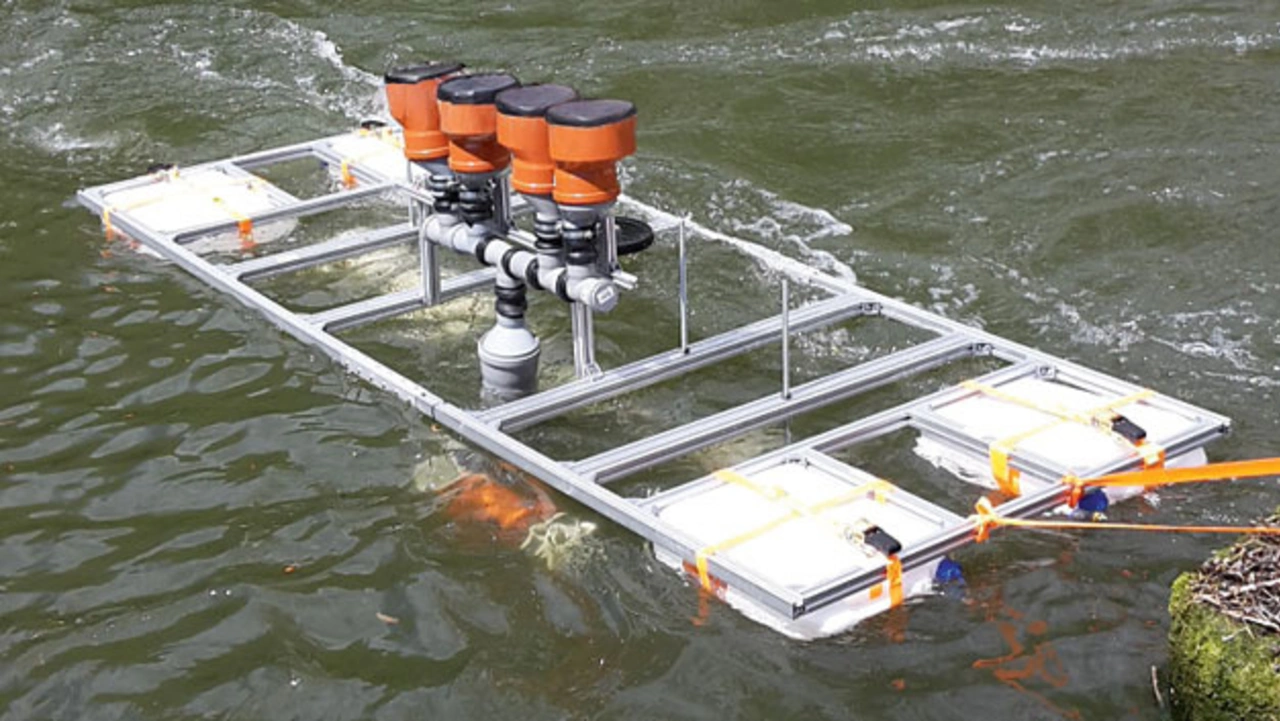Capacitive Transducers
Energy from the Stream
Fortsetzung des Artikels von Teil 1
Technology Largely Adaptable

Systems such as those developed at the CeSMa can be constructed in modules and scaled to the largest extent - adapted to the local conditions of the respective water body. They are environmentally friendly, very quiet, and wear-free. It can be used from water depths of 0.5 m and speeds from 0.5 m/s. The goal is to develop generators with 100 W continuous output power, which will then work with a larger number of foils.
Such generators are suitable, for example, for the decentralized power supply of camping sites or remote settlements located directly on waterways (Fig. 2). By eliminating the need to lay cables, considerable costs can be cut.
Silicone knows virtually no material fatigue and lasts very long. However, long-term tests are essential to guarantee the necessary safety. The ISC has designed its own machines for this purpose. Lifetimes of at least 100 million cycles are required. It is currently becoming apparent that these can be reached.
Head of Development Dr. Bernhard Brunner explains the prospects for the systems based on capacitive transducers: "Bavaria has small rivers with a total length of 30,000 kilometers in which our system, which is independent of wind and sun, could be used ideally. If we installed 1,000 of our plants, we could feed 876 MWh per year into the grid and thus decisively support the energy transition in Bavaria".
Two different versions are currently under development: a floating and a fixed version. Initial field tests are already underway in northern Bavaria at the rivers Wern and Tauber, in close coordination with the municipality, water management office, and environmental authorities.
The efficiency, i.e. ,the ratio of the electrical power gained to the mechanical power put in, is 4 to 5 %. This seems to be very low compared to turbines that achieve 85% efficiency. However, the efficiency is of little interest, because the mechanical power is available in abundance anyway.
Ultimately, it depends on the financial aspect: How much is 1 kWh? Or better, because here, as with photovoltaics, almost only the initial investment is required and the running operating costs are minimal: How much does 1 kW of power cost? According to Brunner, the estimated investment costs of 3,000 euros per kW are on a similar scale as small hydroelectric power plants or solar and wind power plants.
Practical advantages of such generators are: They require no hydraulic engineering work and very little maintenance, and they have no problems with environmental regulations and nature conservation. Fish slip through without being impeded. Series-production readiness should be reached in a few years.
- Energy from the Stream
- Technology Largely Adaptable









